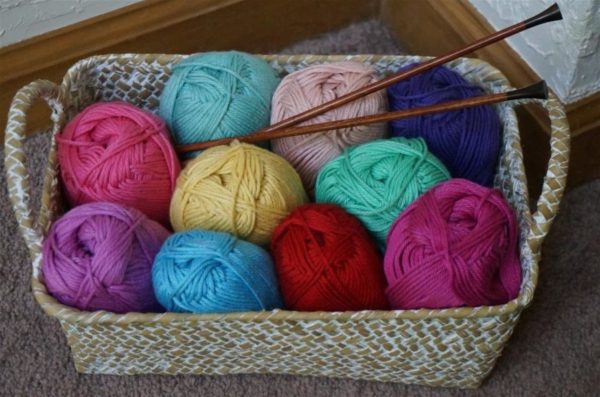Knitting napkins is a way to show your individuality and skill. They are easy to make, and this is where the journey of a beginning needlewoman begins. Such crafts make an excellent gift and decoration for your apartment.
General rules for knitting napkins
For starters, any simple diagram with explanations in Russian will do. As you get involved in the process, you begin to read graphic symbols. The main thing in this painstaking task is attention and perseverance.
Gradually, as you gain experience, you can move on to more complex options. Some craftswomen believe that the most beautiful masterpieces are created with crochet, but believe me, knitting needles are in no way inferior.
There are three ways to cast on loops:
- using a hook, air loops are cast on with the transition to the knitting needles;
- using additional thread;
- classic: cast on the required number of stitches on 2 knitting needles and then close into a circle.
IMPORTANT! Beautiful small motifs can be combined into large products that surprise with whimsical curves.
For work we will need stocking or sock knitting needles.There are 5 of them in the set, and how many are useful - this already “decides” the size and number of rapports. They have open working ends, so use ferrules for convenience. Then the workpiece will definitely not “run away” anywhere.
REFERENCE. If you get a very large napkin, it is recommended to switch to circular knitting needles.

At the end, starch the finished product, stretch it and dry it on a flat surface. For convenience, it is placed on white paper and the edges are secured with stainless pins. Then you need to carefully iron it and place it on the prepared place.
Where to start knitting napkins? Choosing threads and patterns in Russian
For napkins you need to buy cotton threads. Based on reviews and experience, we can recommend:
- Violet (Violet) YarnArt;
- Iris;
- Snowflake;
- Rose;
- Lily produced by the plant named after. Kirov;
- Vita Cotton Pelican.

We select knitting needles based on the yarn. Ideally, the diameter of the thread folded in half should match the diameter of the knitting needle. Each craftswoman knits differently - some tightly, some loosely. Therefore, we start, for example, with knitting needles number 1.0, and if necessary, move to 1.5 or even 2.0.
Having decided on the tool, we look for a diagram. They are compiled on general principles with explanations. It is convenient to use examples from magazines.
To maintain an even shape, it is important not to skip rounding the corners. But napkins can be knitted in squares, ovals, stars, triangles and polygons. The examples below show what knitting looks like in the process.

INTERESTING! The napkin technique has become the basis for creating sweaters, bags, and tops. The technique of knitting from the center in a circle helps to create weightless openwork patterns.
Distribute the loops so that one repeat is on one needle. Partial placement on two makes calculations difficult.For large napkins, it is recommended to use circular knitting needles. They should be at least 10-15 cm shorter than the diameter of the finished product. Otherwise, the knitting will stretch and the work will become more complicated.
Simple napkin patterns for beginners with detailed descriptions
Are your knitting needles, threads and good mood ready? Then we begin to look at examples. To understand the logic, I suggest considering both a square and a circle.
Square napkin
The scheme is called "Bell". The result should be a delicate napkin approximately 26 cm in diameter. The description is so simple that a beginner can handle it!

- Cast on 12 stitches and distribute onto 4 double needles, joining into a ring.
- Knit rapport 4 times as indicated in the diagram.
- All yarn overs are knitted with knit stitches.
- From rows 66 to 77, please note that all loops are knitted only in the front way.
- In the 71st row we should have 36 repeats on the knitting needles.
- After the 78th row, close the loops with a crochet hook.
- The last openwork row is columns with 12 air loops between them.
Round napkin
It is designed for a large size. The result is approximately 50-55 cm, depending on the yarn and knitting density.

- Cast on 8 stitches, distribute onto 4 knitting needles, 2 each.
- The first two rows are considered zero and are knitted.
- Further according to the scheme. On our knitting needles, rapport should be repeated twice on each.
- All even rows are knitted!
- From row 27 you can switch to circular knitting needles.
- In the 31st row, 6 are made from one loop.
- At 43 - from one to 3.
- From the 47th row, where the red line runs, this fragment is repeated three times.
- On the 55th row, the loops are closed with a crochet hook. Tying - first a single crochet row. Then a row with a connecting column.
Ready! All that remains is to carefully wash, starch, lay out and dry.
Interesting ideas for the needlewoman
It happens that knitting napkins becomes so fascinating that a cart and a small cart of all colors and shapes accumulate. What to do? This is an ideal gift for friends and family. But over time, they will also run out of free surfaces. Then creativity and ingenuity come to the rescue! You can create a small miracle from napkins.





In conclusion, a small selection for inspiration.







To all craftswomen of straight buttonholes!










 0
0





